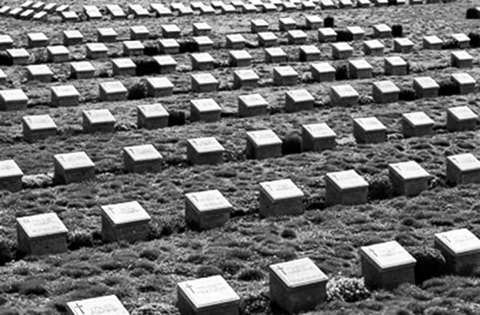John Orr Special to the Citizen
In the April 24 issue of the Cowichan Valley Citizen, the five men of South Cowichan who fell during the Second Battle of Ypres (April/May 1915) were described. Today, we will focus on a campaign and battlefield as far removed from Flanders Fields as is possible within the context of the First World War.
At the end of 1914, the situation on the Western Front had entered a stalemate as the opposing armies of the Central Powers and those of the French and British Empires dug in along a line from Switzerland to the English Channel. In an attempt to break out of this impasse, Winston Churchill, then First Lord of the Admiralty, proposed that the French and British navies force the Dardenelles Strait leading from the Aegean (Mediterranean Sea) to the Sea of Marmora, thereby removing Turkey as a belligerent power and opening a maritime passage to Russia. When the naval operation failed due to the determined defence of the strait by the Turks, it was decided to double-down and land ground troops on the Gallipoli peninsula to clear the Turks from the area. As is well known, this operation was also a failure. What may be less well known is that the Gallipoli campaign involved both Canadians (3rd Canadian Stationary Hospital) and Newfoundlanders (the Newfoundland Regiment) as well as two young men from South Cowichan, Duncan and Robin Hook.
The Hook family emigrated from England to Vancouver Island in 1910. The family consisted of Allan and his wife Janet along with their four children; three sons — Duncan, Robin and Geoffrey — and one daughter, Hope. They arrived in Victoria on Aug. 6 on board the Empress of India via Yokohama, Japan and established a farm in Cobble Hill. As both Duncan and Robin Hook were qualified civil engineers, they were soon gainfully employed in the construction of the Kettle Valley Line in the interior of British Columbia.
When war was declared on Aug. 4, 1914, Duncan and Robin promptly answered the call of duty and embarked in S.S. Finland in New York City for passage to the UK, arriving in Liverpool on Sept. 24, 1914. They then enrolled in the Inns of Court Officer Training Corps and were subsequently commissioned as Second Lieutenants in the 9th (Service) Battalion, Lancashire Fusiliers.
The 9th Battalion was one of the first units of Kitchener’s “New Army” — named after Lord Kitchener, Secretary of War, who had accurately forecast that the First World War would not be over quickly and would require large-scale mobilization of the populace.
The initial Gallipoli landings took place at the southern end of the peninsula in April 1915 and soon became bogged down. In an attempt to turn the flank of the Turkish troops and to support a breakout operation, a landing further up the Aegean coast was planned for August 1915.
The 9th Battalion was part of a landing force that came ashore in Suvla Bay during the night of Aug. 6/7. The landing was botched from the very beginning due to a variety of circumstances, not the least of which was that they were landed in over four and a half feet of water when they had anticipated no more than two feet. (Remember that the average height of a “Tommy” at this time was under five and a half feet.) An additional complication was that this was among the first combat actions undertaken by units of Kitchener’s “New Army” and the inexperience of the staff as well as the junior officers and men soon became evident.
Once ashore, the troops became disoriented in the dark and made slow progress against a smaller Turkish force of well dug-in, experienced soldiers who had been alerted when the landing force arrived offshore. Counting on the element of surprise, the British plan had been to sweep the Turks out of their positions with “cold steel” at the point of a bayonet and the troops were ordered not to load their rifles before dawn. When it became apparent that the landing was actively opposed, the troops had great difficulty using their weapons as they had been immersed in salt water and the firing mechanisms had seized up.
Sometime during the early morning of Aug. 7, 1915, Duncan and Robin Hook both died in the assault on Hill 10, a short distance from their initial landing area.
So passed two sons of South Cowichan, a very long way from home. They are interred side by side at the Hill 10 Commonwealth War Graves Cemetery in Suvla Bay, Gallipoli and are commemorated on the War Memorial, Churt, Surrey (their birthplace) and the South Cowichan and Cowichan Valley cenotaphs.
(The assistance of Dr. Juliet McMaster in the preparation of this article is gratefully acknowledged.)
